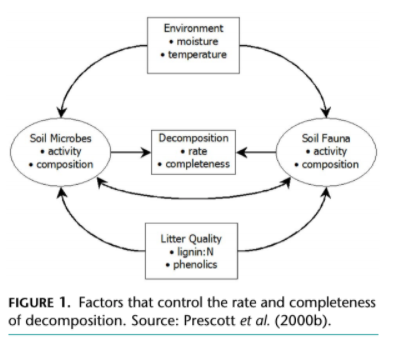
News/Reports
Litter decomposition in B.C. forests: controlling factors and influences of forestry activities
We recently received the following email from Dr. Cindy Prescott , Professor of Forest Ecology and Ecological Restoration at UBC:
” I attach the paper that presents the results of this experiment comparing rates of decomposition of litter in BEC zones. I used Ecological Reserves – Trout Creek and Skihist – for the Ponderosa Pine zone, as they were the only places that did not have cattle grazing. It turned out to be very important to the conclusions as these two sites had the slowest decomposition and helped drive the relationship between annual precipitation and decomposition rate.
This finding caused me to wonder why there was so little litter and forest floor accumulating on the soil surface in PP sites (also IDF) which led to a follow-up study of red wood ants in these ecosystems. It indicated that most of the litter gets incorporated into ant nests, so there is not a build-up of forest floor on these sites. This study was not conducted in an Ecological Reserve and is only in thesis form.
It’s wonderful to have these intact ecosystems available for research!
Kind regards
Cindy”

See the complete PDF file here:
Prescott Blevins 2004 Litter decomposition in BC forests
